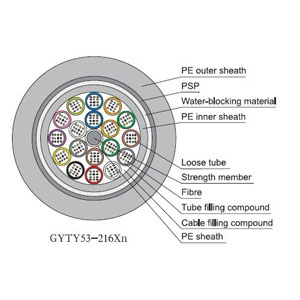-

- Sopto Home
-

- Special Topic
-

- Fiber Optics knowledge
-

- What is Optical Fiber and Its Origin
Fiber Optics knowledge
- Maintained Methods of Fusion Splicer Parts
- How to Use the Fiber Optic Cleaver?
- What are Fixed Attenuators & Variable Attenuators?
- Deployable Fiber Optic Systems for Harsh Mining Environments
- Developing Miniature Fiber Optic Cable Has Become the Trend
- Fiber Optic Cleaning Procedures
- 6 Steps to Selecting a Fiber Optic Cable
- Signal Attenuation Introduction
- How Fiber Transmission Works?
SOPTO Special Topic
Certificate



Guarantee
Except products belongs to Bargain Shop section, all products are warranted by SOPTO only to purchasers for resale or for use in business or original equipment manufacturer, against defects in workmanship or materials under normal use (consumables, normal tear and wear excluded) for one year after date of purchase from SOPTO, unless otherwise stated...
Return Policies
Defective products will be accepted for exchange, at our discretion, within 14 days from receipt. Buyer might be requested to return the defective products to SOPTO for verification or authorized service location, as SOPTO designated, shipping costs prepaid. .....
Applications
Fiber Optis can be used in so many fields:
Data Storage Equipment
Interconnects,Networking
Gigabit Ethernet
FTTx, HDTV,CATV
Aerospace & Avionics
Data Transfer Tests
Network Equipment
Broadcast Automotive
Electronics,Sensing
Oil & Gas, Imaging
Outside Plant,Central Office
Harsh Environment
Data Transmission
Illumination,Institutions
Ship to Shore,Education
Simulation,Military,Space
Unmanned Aerial Vehicles
Semiconductor Equipment
Diagnostics & Troubleshooting
Premise Networks Carrier Networks
Independent Telecommunication Providers
SOPTO Products
- Fiber Optic Transceiver Module
- High Speed Cable
- Fiber Optical Cable
- Fiber Optical Patch Cords
- Splitter CWDM DWDM
- PON Solution
- FTTH Box ODF Closure
- PCI-E Network Card
- Network Cables
- Fiber Optical Adapter
- Fiber Optical Attenuator
- Fiber Media Converter
- PDH Multiplexers
- Protocol Converter
- Digital Video Multiplexer
- Fiber Optical Tools
- Compatible
Performance Feature
Fiber Optics knowledge
Recommended


What is Optical Fiber and Its' Origin
An optical fiber is a single, hair-fine filament drawn from molten silica glass. These fibers are replacing metal wire as the transmission medium in high-speed, high-capacity communications systems that convert information into light, which is then transmitted via fiber optic cable. Currently, American telephone companies represent the largest users of fiber optic cables, but the technology is also used for power lines, local access computer networks, and video transmission.
Direct Buried Fiber Optical Cable
Alexander Graham Bell, the American inventor best known for developing the telephone, first attempted to communicate using light around 1880. However, light wave communication did not become feasible until the mid-twentieth century, when advanced technology provided a transmission source, the laser, and an efficient medium, the optical fiber. The laser was invented in 1960 and, six years later, researchers in England discovered that silica glass fibers would carry light waves without significant attenuation, or loss of signal. In 1970, a new type of laser was developed, and the first optical fibers were produced commercially.
In a fiber optic communications system, cables made of optical fibers connect data links that contain lasers and light detectors. To transmit information, a data link converts an analog electronic signal—a telephone conversation or the output of a video camera—into digital pulses of laser light. These travel through the optical fiber to another data link, where a light detector reconverts them into an electronic signal.
For more info, please browse our website. For purchasing more fiber optic assembly products, please contact a Sopto representative by calling 86-755-36946668, or by sending an email to info@sopto.com.





-180x180.JPG)

